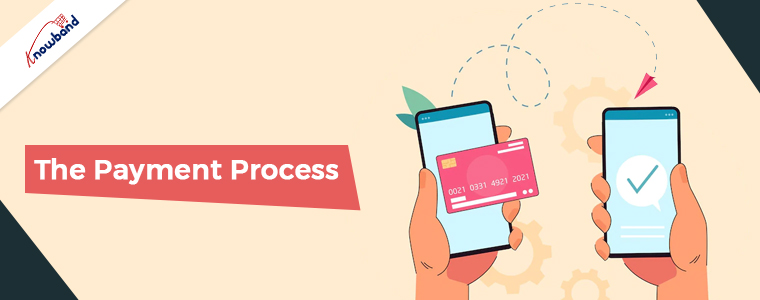The marketplace is the only location where you can find everything you need in one spot, much like the largest online marketplace in the world, Amazon. The potential of the marketplace sector is at its highest point, and as a result of the epidemic, a large number of start-ups around the world are expressing significantly more interest in the marketplace business model.
A multi-seller marketplace can be built or created in one of two ways:
- PHP or other coding languages are used to create the marketplace’s software from the bottom up.
- Utilizing an established e-commerce platform, such as Magento, PrestaShop, Shopify, Opencart, WooCommerce, etc.
In contrast to the latter, the former requires significant financial investment and technological know-how.
Instead of starting from scratch, if you’re a beginner, you must leverage the current eCommerce platform. The Magento 2 Marketplace module from Knowband, which was designed by qualified programmers, is the ideal option for building one. In order to fully meet the needs of the admin, vendor, and customers, we included a number of special features and customized the extension.
1. Who may offer goods on the Magento 2 Marketplace?
The platform on which independent sellers list their goods for sale. Additionally, anyone, absolutely anyone, can register as a seller using the Magento 2 Marketplace plugin. A seller registration page is available on the Magento Marketplace’s front end, from which any visitor can sign up to become a vendor.
2. Include Multiple Membership Plans

The vendor has the option to choose a membership package after registering. You can design a variety of membership plans based on how many items a seller can submit and how many days the plan will be active, such as a monthly plan or an annual plan.
The store owner has the right to impose membership fees on vendors.
3. Inventory can be managed by the Vendor
Your vendors should add their own products in order to quickly begin selling and maintain inventory control inside your marketplace. Customers can purchase from multiple sellers at once in the Magento 2 Marketplace extension, and each seller has a separate order management system for managing customer orders called a seller dashboard.
Because the in-stock product has built-in cron capabilities, the product list can be automatically updated.

4. The Merchant can upload many Products at once
The Magento 2 Marketplace Module allows for bulk uploads of the product list, and the seller can do this from the dashboard by uploading a CSV file. This is simple to implement and will cut down on the unnecessary time spent on the product listing.
5. Administration and Seller Processing of Orders
Both the owner and the associated merchant would manage the marketplace orders. Vendors can view orders in the seller dashboard. Similarly, the admin in the admin panel can keep a track of the Magento 2 marketplace orders. You can modify an order’s status, label it as shipped or pending, etc.
Additionally, using the Magento 2 Multi-vendor marketplace module, the store owner can determine whether to permit or prohibit the vendors from handling orders.
6. The Shipping Network

Adding delivery choices is up to the seller. Sellers can incorporate their own delivery choices using the Magento 2 Marketplace module. This allows them to chart their items and provide a variety of shipping alternatives. The module also enables the store’s administrator to give sellers a variety of shipping options.
7. The Payment Process

Making on-time payments can be difficult when there are many vendors, but the cron automated payment mechanism entirely relieves the admin of this responsibility.
The owner of the store can enable automatic seller payouts, which streamline the payment request procedure. In this configuration, the administrator has the option of using cron URLs or the “Process Paypal Payout Status” cron directly.
The sellers have the right to ask for payouts of the remaining sum. With only one button click, the admin may manually accept payout requests, which makes managing the Magento 2 Marketplace operations simple.
8. Simple Commission Management
The admin has levels of configuration for the sellers’ commission.
All marketplace vendors will be subject to the global commission rate.
Individual Seller Commission: On the Magento 2 Marketplace, separate commission fees may be assessed at the individual seller level. The administrator has access to each seller’s commission information by order.
9. Pre-installed Email Templates

The sellers and buyers must be promptly notified of any order updates. The Magento 2 platform’s marketplace modules include a number of standard email templates that are pre-configured to send various types of updates.
Our Magento 2 marketplace module’s backend includes a number of email templates that may be used to notify buyers and sellers. The admin can update any email template immediately from the admin panel by using this plugin. All email templates support a variety of languages.
10. Flexible Methodology and Compatibility

All themes for Magento 2 are compatible with the plugin. It supports different languages and might assist you in selling internationally. With the Magento 2 Multi-vendor marketplace module, many Magento 2 extensions are compatible. Mobile apps can be made using the Magento 2 Mobile App Builder.
More to offer:
The administrator has access to a variety of seller information, including top-selling items, customer and seller ratings, transactions, earnings, orders placed with specific vendors, and much more. You can build a marketplace on the Magento 2 platform with the aid of the marketplace module’s numerous additional capabilities.
In Conclusion:
The ability to create an online marketplace is growing, and with accessibility comes fierce competition. With the right mix of strategies for what you’re selling, you’ll make your marketplace site stand out from the crowd and outperform the competition. You can start to finish with the support of Knowband’s marketplace solution as you create your online marketplace.
I hope this post was beneficial to you now that you are aware of the key characteristics of the Magento 2 Multi-vendor Marketplace module. If you have any feedback, please leave a comment below. If you need any help setting up your marketplace, please contact us at [email protected]. For the OpenCart, Magento, and PrestaShop platforms, Knowband also created the marketplace module.





